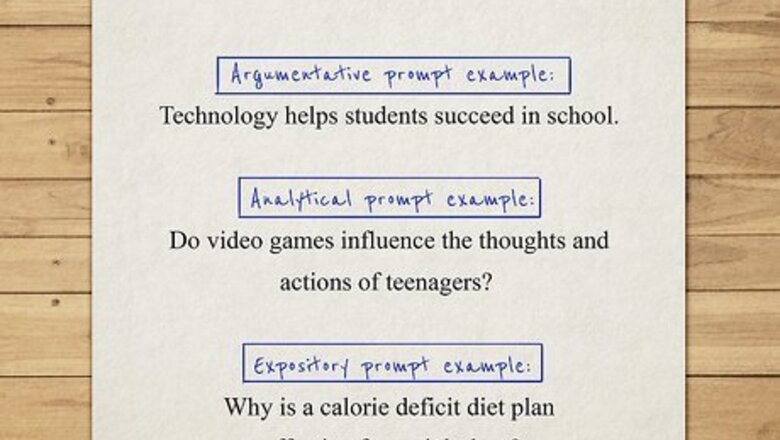
views
X
Research source
A good thesis is easy to write if you know what to include—that’s why we’re here to walk you through everything you need to know. Read on for plenty of tips, explanations, and examples to help take your thesis-writing game to the next level.
How do you write a strong thesis statement?
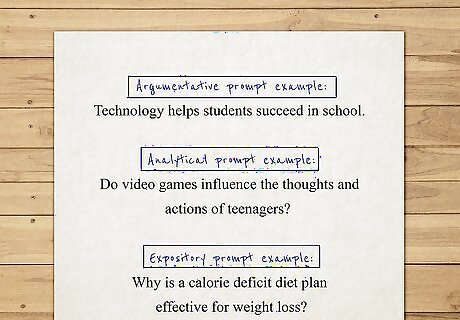
Identify the type of thesis you need to write. Most academic writing assignments fall into 3 categories: argumentative, analytical, and expository. Argumentative assignments invite you to take a side on a given topic, analytical assignments ask you to take a closer look at a specific issue, and expository assignments expect you to explain something in more detail. Take a quick read through your prompt and see which category it falls under. Argumentative prompt example: Technology helps students succeed in school. The prompt wants you to state whether you agree or disagree with this stance, and why. Analytical prompt example: Do video games influence the thoughts and actions of teenagers? The prompt wants you to research both sides of this controversial topic and come up with an analysis. Expository prompt example: Why is a calorie deficit diet plan effective for weight loss? The prompt wants you to go into detail on a specific topic.
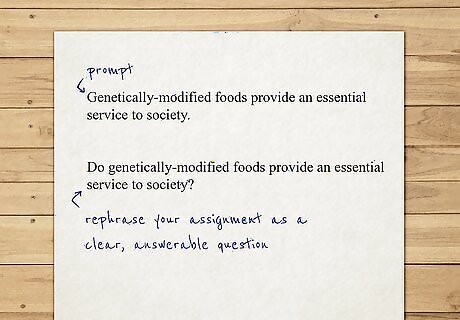
Transform your assignment into a research question. At the end of the day, your thesis is an answer to some type of question—so, the key to writing a good thesis is knowing what that question is. Read through your assignment prompt and try rephrasing it as a clear, answerable question. The prompt “Genetically-modified foods provide an essential service to society” could be changed to “Do genetically-modified foods provide an essential service to society?” The prompt “Many people are divided over the advantages and disadvantages of wearing masks” could be adjusted to “What are the pros and cons of wearing masks?”
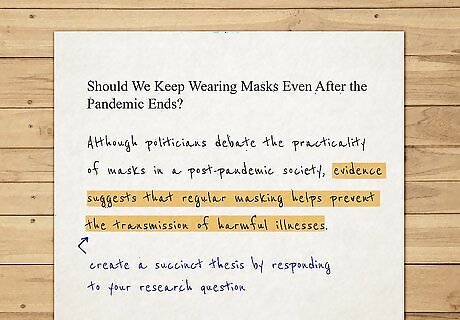
Create a succinct thesis by responding to your research question. Do some basic research on your prompt or topic so you have a basic understanding of it. Look for common themes and connections that seem to pop up. Then, draft a working thesis based on the facts, themes, and evidence that you discover during your research. Example: GMOs provide a high volume of delicious, long-lasting food, making them an essential service to society. Example: Although politicians debate the practicality of masks in a post-pandemic society, evidence suggests that regular masking helps prevent the transmission of harmful illnesses. Remember—your thesis is a work in progress! You’re welcome to tweak, adjust, and completely change your thesis so it accurately represents your research. If your professor or teacher assigns an essay or paper with a pre-assigned topic, you might not have to do as much research.
What makes a thesis statement good or effective?
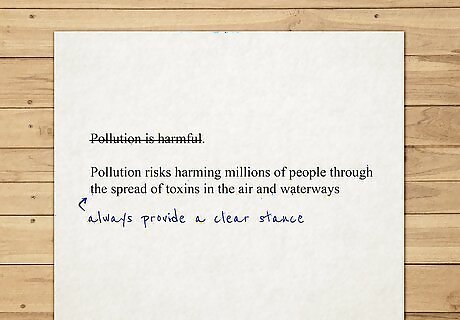
A good thesis statement provides a clear stance. It isn’t an educational tidbit—it’s your educated take on a particular topic. A good thesis statement pushes your paper or essay forward, rather than halting it in place. Bad thesis: Pollution is harmful. Better thesis: Pollution risks harming millions of people through the spread of toxins in the air and waterways.

A good thesis statement includes a discussable topic. Pretend you’re reading your thesis in front of a group of people. Is your stance controversial enough that some of these people might disagree with you? If not, you’ll need to tweak your thesis so it’s a little more divisive. Bad thesis: Pineapple is a pizza topping. Better thesis: Pineapple’s sweet flavor profile makes it an unsavory choice as a pizza topping.
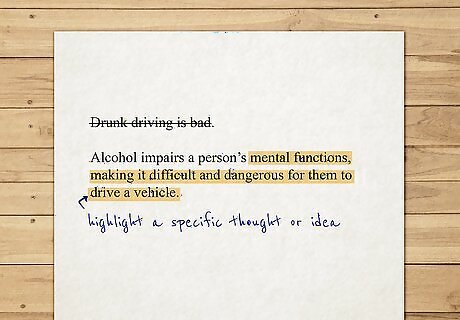
A good thesis statement highlights a specific thought or idea. The more vague your thesis is, the more disorganized and scattered your paper will seem. Hone in on a specific aspect of an idea, rather than using a broad issue as a talking point. Bad thesis: Drunk driving is bad. Better thesis: Alcohol impairs a person’s mental functions, making it difficult and dangerous for them to drive a vehicle.
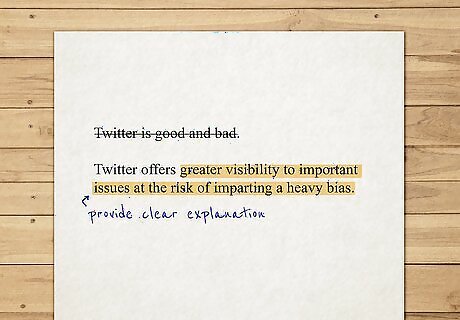
A good thesis statement doesn’t leave a reader asking “how” or “why.” Take a look at the bad thesis example below. While the thesis does state a clear stance, it doesn’t explain why or how Twitter is both good and bad. In the better thesis example, we clearly answer both of these questions so there’s no confusion for the reader. Bad thesis: Twitter is good and bad. Better thesis: Twitter offers greater visibility to important issues at the risk of imparting a heavy bias.

A good thesis statement clearly answers the question “so what?” Your thesis statement needs to convince the reader to keep going—otherwise, what’s the point of outlining all of your thoughts and arguments in the next several paragraphs and pages? If your thesis doesn’t explain the importance of your topic, your reader will have no motivation to move on to the next paragraph. Bad thesis: The rise of technology has pros and cons. Better thesis: The rise of technology improves digital literacy, but limits opportunities for in-person interactions.
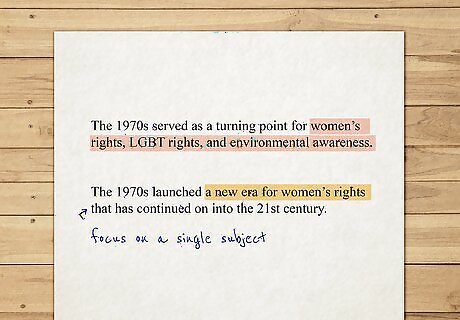
A good thesis focuses on a single subject. Think of your thesis as a mapped-out guide for the rest of your paper—it needs to clearly show what your paper’s “destination” is, so the reader knows what to expect. When you include too many focuses in your thesis, your carefully crafted map suddenly branches off in a bunch of different directions. This makes your paper confusing and difficult to follow. Bad thesis: The 1970s served as a turning point for women’s rights, LGBT rights, and environmental awareness. Better thesis: The 1970s launched a new era for women’s rights that has continued on into the 21st century.
Examples of Thesis Statements
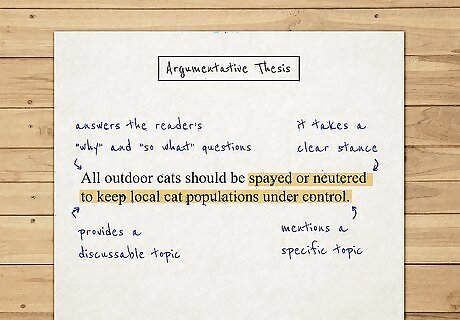
ArgumentativeAll outdoor cats should be spayed or neutered to keep local cat populations under control. This thesis statement checks off all the boxes—it makes a clear stance (“all outdoor cats need to be fixed”), provides a discussable topic (whether or not outdoor cats need to be fixed), and mentions a specific topic (outdoor cats rather than cats in general). It also answers the reader’s “why” and “so what” questions (“to keep the local cat population under control”).
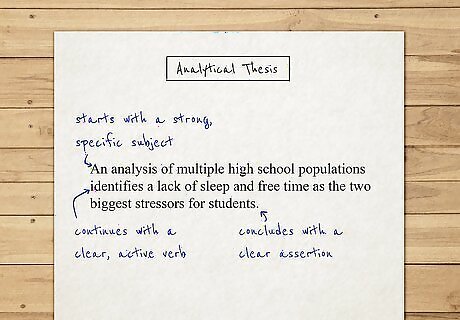
AnalyticalAn analysis of multiple high school populations identifies a lack of sleep and free time as the two biggest stressors for students. This thesis starts with a strong, specific subject (“an analysis of multiple high school populations”), continues with a clear, active verb (“identifies” rather than “is”), and concludes with a clear assertion (that a lack of sleep and free time are students’ biggest stressors). Eliminate passive verbs like “is” or “was”—they don’t paint a very clear picture for your reader.
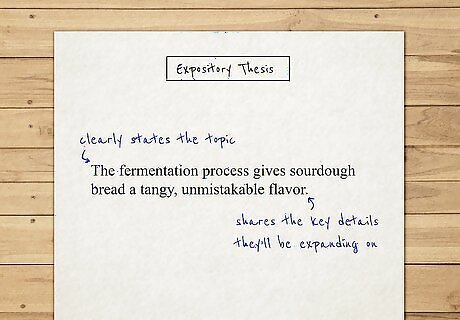
ExpositoryThe fermentation process gives sourdough bread a tangy, unmistakable flavor. The writer clearly states the topic they’re expanding on in their essay/paper right from the start (the fermentation process for sourdough bread). In the second half of the thesis, the writer shares the key details they’ll be expanding on (how fermentation affects the flavor of sourdough bread). A list format works well for expository thesis statements! List out the different topics you’ll be discussing, and then dedicate different sections of your paper to each point.




















Comments
0 comment